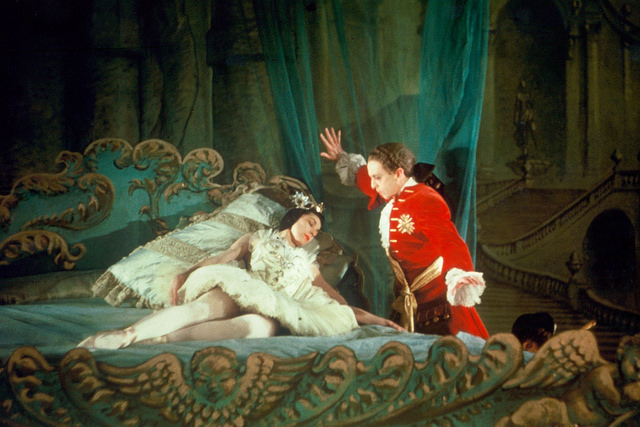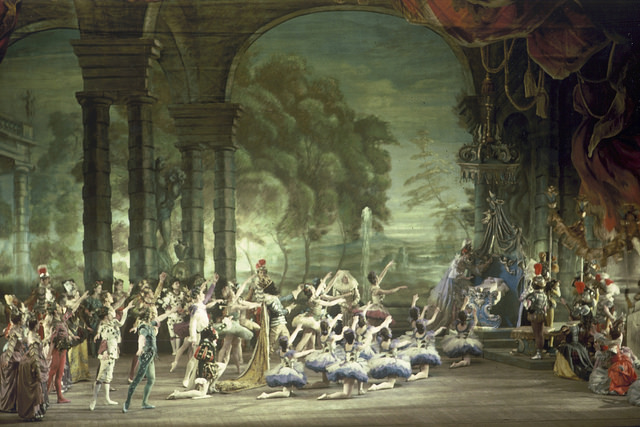Awakening Sleeping Beauty
Dr Kate Guthrie, who is British Academy Postdoctoral Research Fellow in the Department, tells us about her new article that has just come out:

Last week, my article ‘Awakening Sleeping Beauty: The Creation of National Ballet in Britain’ came out in Music & Letters. I found the moment of publication both exciting and strange: exciting because it’s always satisfying to see one’s work in print; but strange because the publication process is so lengthy that I’ve moved on to thinking about other, newer things. When the invitation to write a blog post came a few hours later, it seemed like a good moment to reflect on how the whole thing came about.
The material in this article started out as the final chapter of my PhD thesis. When I was writing my PhD proposal, my supervisor encouraged me to consider a variety of media. One of the luxuries of doing a PhD is that there is time to experiment: to explore new topics, to write about new sorts of things. So, along with chapters on orchestral music, film music and popular song, I decided to include a chapter on ballet. A high-profile event that was widely discussed in the press, the post-war re-opening of the Royal Opera House in 1946 seemed an obvious place to start. (It re-opened with a performance of Tchaikovsky’s The Sleeping Beauty by the Sadler’s Wells Ballet Company because there didn’t seem to be an opera company in Britain fit for the task.)
While every topic has its own challenges, my experience of researching this one was distinct on several fronts. For one thing, it was the first time I’d researched something that had already been written about by numerous other people. My previous work had focused on music written and performed in Second World War Britain – an era whose musical culture has for the most part been dismissed by scholars as overly-politicised and second-rate. It was also the first time I’d written about ballet. I cannot dance; nor can I read choreographic notation. In addition, it was the only chapter in my thesis that dealt with an ‘old’ piece of music, rather than a newly composed one. Probably because the score was well known, the newspaper reviews paid hardly any attention to the music. These particular challenges inevitably shaped the type of article I produced.

There are many different ways of going about research: some people like to start in the archive, unearthing unknown primary sources; others prefer to begin with the secondary literature and work backwards from there. On this occasion, I decided to do both simultaneously – and it was this that led me to the article’s main argument. For as I started reading, I noticed a gap between what was recorded in the historical documents, and how this event had been interpreted in the secondary literature.
Most of the scholars who have written about this event have celebrated it as a triumph for classical music. In some senses, it is easy to see why: during the war years, the Opera House had been converted into a dance hall – the orchestra was replaced by big bands, opera stars by crooners, ballerinas by foxtrotters. It was not until 1946 that the building was reclaimed as a venue for high art. What’s more, the re-opening marked the inaugural performance of Britain’s first national ballet company. The opulent new production of Sleeping Beauty seemed to abandon the wartime emphasis on encouraging amateur involvement in the arts, in favour of a more elitist preoccupation with international prestige.
But the evidence I found suggested that something more complicated was going on. On the one hand, the new management seemed keen to democratize the Opera House, for example by lowering ticket prices and relaxing the dress code. On the other hand, with its the extravagant set and celebrity ballerina, the Tchaikovsky performance tapped into an old tradition of balletic spectacle. While this brought a certain glamour to the occasion, such spectacle also had negative associations with superficial, sensationalized mass culture. These connotations were only exacerbated by the wild enthusiasm of ballet-lovers, whose behaviour often appeared closer to that of football hooligans than Opera House audiences. It seemed, then, that neither in its production nor its reception was this occasion as straightforwardly elitist as scholars had often suggested. This discovery became the starting point for my alternative reading of this event.
The critical commentary on ballet audiences was without a doubt the most fun part of the article to research. Their apparent obsession with ballet was so controversial that it inspired a new term: “balletomania”. Mostly used as an insult, this word implied that ballet-loving was a sort of illness. As one writer explained, balletomania “is contagious and sometimes chronic, although its results are as a rule fairly harmless. … In its advanced stages it takes the form of an inexplicable malaise, which at the mere mention of ballet, seems either to paralyse or convulse what may be an otherwise well-balanced intellect” (Bentley, Ballet-hoo, 1948). While I invariably find research interesting, it is less usual for it to be amusing. Happily, this topic turned out to be both, which made writing the final article all the more enjoyable. 

